The Atrium Light Newsletter #1
Welcome to our new newsletter. I hope you enjoy our sharing and encourage you to continue to pray for and support our work in Western Australia
Welcome to our new newsletter. I hope you enjoy our sharing and encourage you to continue to pray for and support our work in Western Australia
As we move towards Holy Week and this years’ Lenten fasts seem to be including Mass as well, let us meditate on what is most precious to us in this most holy of seasons.
With your family, prepare a sacred space with a prayer table and perhaps some sort of diorama that tells the story of Easter. Just as we do at Christmas. Perhaps using a box or paper prepare the space where he will be laid. Have a last supper area, a way of the cross. Get everyone involved in making this celebration more meaningful and personal in a way that brings the responsibility home to you.
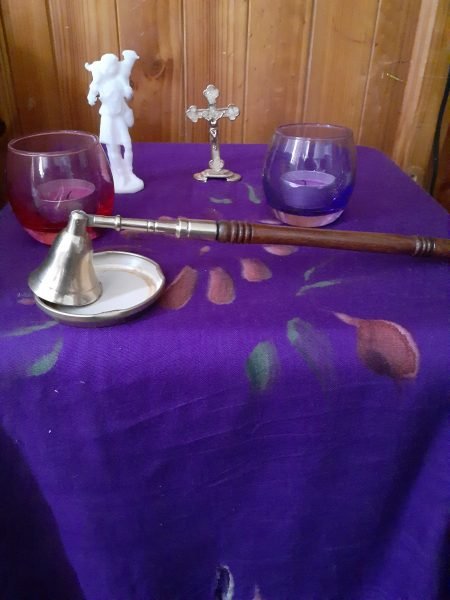
I have been noticing suggestions for Palm Sunday, such as putting a branch on your door to show that you are celebrating the feast. I invite you to go even further. In the church we call the coming Sunday Passion Sunday, the day we read the passion of Jesus from the Gospel of Matthew (Matthew 26:14-27:66). As it happens, the Gospel we read at the beginning of the Mass on the entry into Jerusalem of Jesus on a donkey is also from Matthew (Matthew 21:1-11). What if you begin as a family reading the Gospel of Jesus entering Jerusalem at your front door (just as we do in Mass) and then lay your palms on your doors or near your entry way? This then makes your house the place where the event will occur in holy week.

Your family can journey through holy week reflecting on each of the four Gospel writings on the passion. Perhaps you may reflect on how similar or different they are from on another and how with all of the versions we get a fuller account of the message of Jesus.
Back to Passion Sunday. Read ALL of the readings (Isaiah 50:4-7, Psalm 22:8-9,17-18,19-20,23-24), Philippians 2:6-11). As the first Gospel proclaims what happened on Calvary was to fulfill what the prophets had said. You get a picture painted of what is to come and that it is all part of the Plan of God. The Psalm could be written out and the response shared by the family.
My God, my God, why have you abandoned me?
Did God truly abandon Jesus? Was his pain and suffering, his death, all for nothing? We see that it is through suffering that God works his greatest work. In Jesus’ suffering and death, death (not Jesus) was overcome. Now we know that we will never die forever but will rise to eternal live with him. Sounds like cause for excitement for us all who are suffering at this time. From the darkness God brings his light. And in that light, darkness flees, the light overcomes the darkness EVERY TIME. As we pray this psalm, we can reflect that, yes Jesus suffered and maybe even felt abandoned, but we also know Jesus knew this psalm and he was aware that God had a plan for all of us. A plan that required us to pay a price and a plan that would be so much more than we could ask or imagine.
The verse before the Gospel shows us:
“Christ became obedient to the point of death,
even death on a cross.
Because of this, God greatly exalted him
and bestowed on him the name which is above every name.”
With a small amount of preparation, you could then share out parts for the reading of the Gospel, according to the reading ability and the sensibilities of your children and household members. If you have a small household, you could link via video with another household (or two) to share this retelling of a narrative so central to our faith. This story of our Salvation.
A time of final preparation. A time to reflect. Prepare a quite space to pray individually and as a family. Prepare candles to be lit to show the light of the risen Christ who is stronger than the darkness of death. You could have one for each family member. They could decorate them with their name or own unique symbols.
Some ideas for decorating candles could include
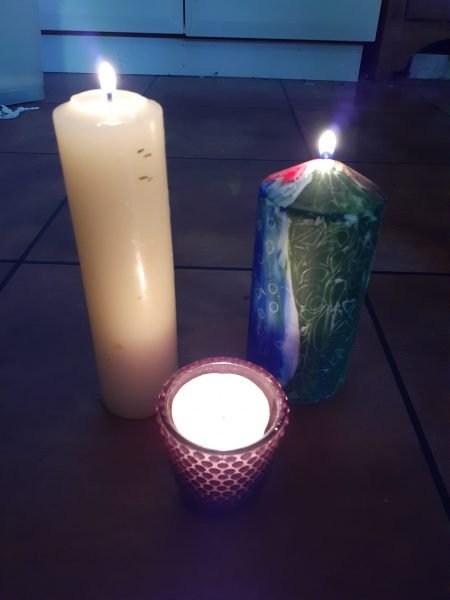
Again, reflect on the readings for the Mass. Prepare a meal for your family in which you remember the events on that night. The words of Jesus. As you read about breaking bread, share the bread on your own table. It is not the Eucharist, but the people gathered are the Eucharist for one another. Just as Jesus shared his body with us, we share our lives with one another.
To help you here are the readings for Holy Thursday, read them and reflect on them with one another.
Exodus 12:1-8, 11-14
Psalm 116:12-13, 15-16, 17-18
1 Corinthians 11: 23-26
John 13: 1-15
Wash one another’s feet. Serve one another.
Set up a family roster to pray all through the night.
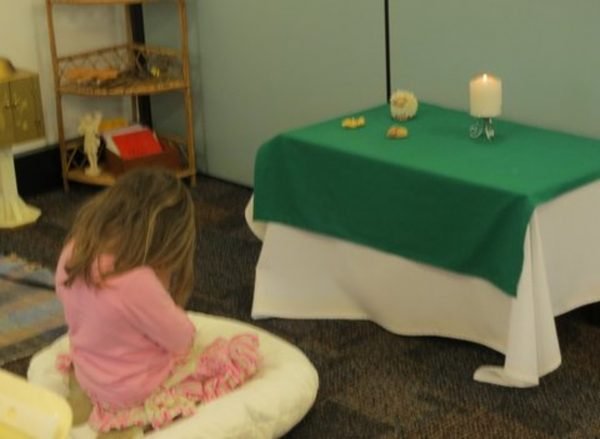
The way of the cross. Get the family to help prepare the stations of the cross around your home. Each place is prepared and reflected on by the same person. Get family and friends to do a station each and share the prayer via video chat. There are many great resources to help you reflect on each station, but make it personal, make it understandable. Imagine yourself as a witness to the events for each station. Pray for the world, pray for yourself, pray to have the courage and love of Jesus.
Wear red.
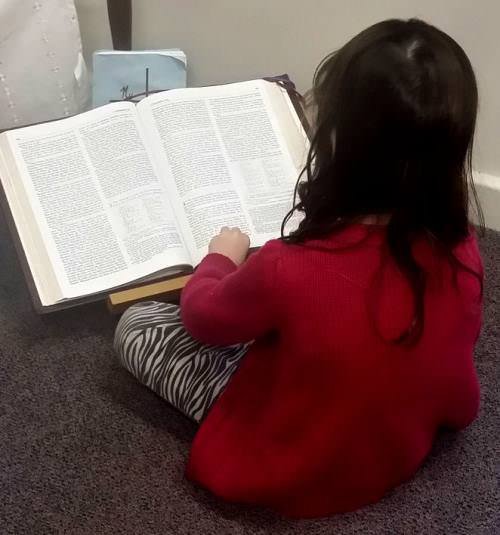
The readings from the liturgy for Good Friday are:
Isaiah 52:13-53:12
Psalms 31:2, 6, 12-13, 15-16, 17, 25
Hebrews 4:14-16; 5:7-9
John 18:1-19:42
Be still. Have a time of silence with the whole family stopping normal activities and just being still with Jesus.
This is the most wonderful of liturgies, the High Mass of the year. We recall our history and we look forward to life in glory with God.
The vigil begins with a liturgy of light, where we see the light of the resurrection growing larger to chase away the darkness. You can use your candles you made here. Darken your rooms and light the candles and see how the darkness is chased away. Sit silently and enjoy the new light as it begins to fill all of creation. There are many beautiful prayers in the liturgy and you can see them here. http://liturgies.net/Liturgies/Catholic/roman_missal/eastervigil.htm
What a great opportunity to enjoy all of the readings and psalms, a feast for us of God’s word and his work throughout all of time.
Spend time together with these words.
Then celebrate
Alleluia he is here!
Make Alleluia posters to put all over the house. Finally, we can sing for joy. He is alive and our salvation is at hand.
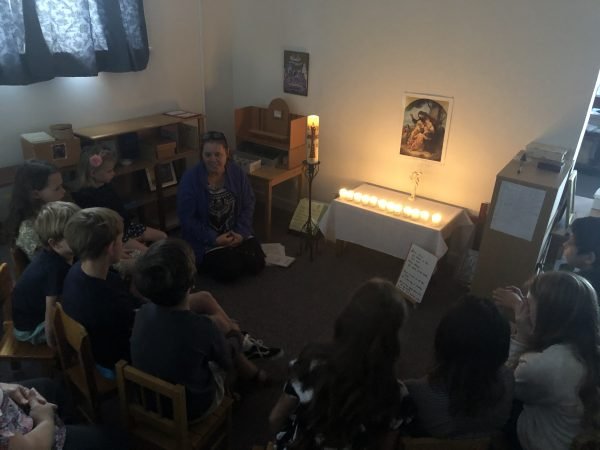
If you have built a tomb, crack it open.
We begin the party today. This celebration will last 50 days. Have you stocked up for it? Have you filled your home with Jesus life and light? Stockpile his love so that you can share. As you contact family and friends, begin with Allelluia!
Have your egg hunts and your chocolate, but even more fill yourself with the power of rebirth, a new life is here for all of us. It is awaiting us as we too will rise from our hiding places.
Go outside and shout to your neighbours
“Allelluia, he is risen indeed!”
“God’s not dead, he is alive”
Enjoy this Video
As we are all over the world being asked to go into exile from our normal day to day business. We are asked to only have contact with those in our households, our families. We are asked to look at what is essential and do that, buy that. What a great opportunity God has provided us with in the Lent of 2020. Just as Jesus was called into the desert before the major part of his life’s’ work commenced, we are called to go into a different desert also, a desert of suffering and pain (for some physical others spiritual and others emotional). Many have been asked to stay away from things we hold very dear such as Mass.
God has been speaking to me about all of this in some songs.
I recall a song I learned many years ago by a group called The Dameans, “Pause a While”
Pause a while, pause a while
In the humdrum of the city and behind a cloister wall
In the early morning and when shadows start to fall
See creation bending to the maker of it all
And all we have to do is pause a while
We were made to build the earth and share it with each other
All of us together at the work of Christ our brother
Tho’ the troubles of the world may tempt you to despair
Look around just
one more time and you’ll see Christ is there
Ev’ry tree
in ev’ry valley, ev’ry running brook
Bear the mark of
Love’s design for those who learn to look
The spirit
promised long ago moves just where he will;
In this high-speed,
neon world, somehow he’s moving still
Barriers of
ev’ry kind, must shatter into dust;
Nothing done is
nothing won where we can’t dare to trust
I noticed as these lyrics floated in my mind that God was calling on his people all over the world to Pause Awhile, to stop and listen to just be still. As we pause, all of creation is being renewed, life is returning to places we have neglected or damaged by our busy lifestyles. The smog is lifting in some places, wildlife is returning to city areas. https://twitter.com/ikaveri/status/1239660248207589383

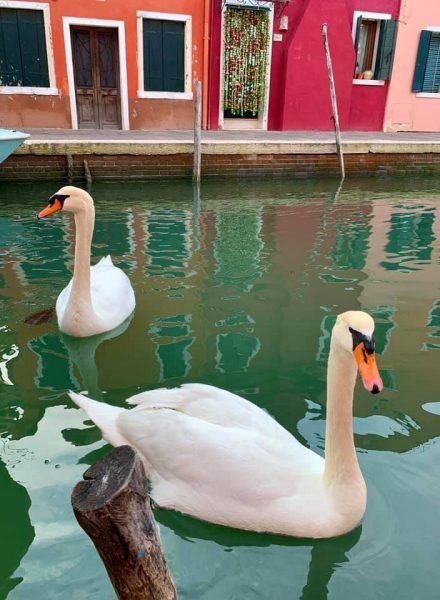
With our children in the atrium, we finished a little early with the Liturgy of Light. We recalled Jesus sharing his light with us all and asking us to share it also with others. The light will grow so bright, that the sun will be dimmed. All of the darkness will be chased away. We sang some songs that reminded me of God’s plan to bring his life and light to all people, everywhere.

Christ Be Our Light (Bernadette Farrell)
Longing for light, we wait in darkness
Longing for truth, we turn to You.
Make us Your own, Your holy people
Light for the world to see.
Christ, be our light!
Shine in our hearts.
Shine through the darkness.
Christ, be our light!
Shine in Your church gathered today.
Longing for peace, our world is troubled
Longing for hope, many despair.
Your word alone has pow’r to save us.
Make us your living voice.
Shine Jesus Shine (Graham Kendrick)
Lord the
light of Your love is shining
In the
midst of the darkness shining
Jesus Light
of the world shine upon us
Set us free
by the truth You now bring us
Shine on me,
shine on me
Shine Jesus
shine, Fill this land with the Father’s glory
Blaze
Spirit blaze, Set our hearts on fire
Flow river
flow, Flood the nations with grace and mercy
Send forth
Your word Lord and let there be light
Lord I come to Your awesome presence
From the shadows into Your radiance
By the blood I may enter Your brightness
Search me try me consume all my darkness
Shine on me, shine on me
As we gaze on Your kingly brightness
So our faces display Your likeness
Ever changing from glory to glory
Mirrored here may our lives tell Your story
Shine on me, shine on me
Alleluia, Alleluia, give thanks to the risen Lord (Donald Fishel)
Alleluia, Alleluia, give thanks to
the risen Lord,
Alleluia,
alleluia, give praise to His name.
Jesus is Lord of all the
earth.
He is the King of creation.
Spread the good news o’er all
the earth.
Jesus has died and has risen.
We have been crucified with
Christ.
Now we shall live forever.
God has proclaimed the just
reward:
Life for all men, alleluia!
As I sang and pondered these words, I was amazed at how clear the message for me was. “Do not worry, my light is stronger than the darkness, my life is stronger than death.”
Pause a while and soak in his light so that when the time comes you will rise radiant in his splendor to shine and fill the earth. It is the desert before the ministry. The darkness that is overcome by the light.
This pause, now, becomes a time of great hope and renewal for all of creation. I am filled with joy and hope.
In the Catechesis of the Good Shepherd, especially with the 3-6-year-old, we do not dwell on Jesus’ suffering and death. Instead we always link his death to his resurrection. Many of the works allow a time to recall that Jesus life was stronger than death and we remember that whenever we light candles, and most especially the Paschal candle in the Baptism Area. The light of the risen Christ is given to each one of us on the day we are Baptised.

There are, however, a few works that are particularly relevant to this Lenten season and in particular to the Paschal Narratives which we encounter during Holy Week. In the atrium of the youngest children, we recall the words of the Last Supper, where Jesus said, “This is my body, this is my blood”, in a work we call the Cenacle. The Cenacle is the name for the Upper Room where Jesus met with his disciples to celebrate the feast of the Passover. The children enjoy preparing the small table as the Apostles did on that day. They sit and consider the words of Jesus and the events that unfold after this time. We pause briefly to consider Jesus’ death on the cross. Then we move on to light candles to recall the resurrection. After all everyone dies, but only Jesus conquered death.

Another work in the atrium which allows us to consider the last days of Jesus is the City of Jerusalem. This is a model of what Jerusalem may have looked like during the time of Jesus. It is a walled city and the most prominent building is also walled, the Temple. This geography material allows the children to imagine the sort of place Jerusalem was., but its primary purpose is to recall the last days of Jesus. The children consider the places and events that occur in Jerusalem beginning with the Last Supper in the Cenacle and moving to the garden of Gethsemane, where Jesus prayed and was later arrested.

We recall that Jesus was taken to the house of Caiphas, the high priest. He was put on trial there. Next, we move to the place where Pilate, the Roman Governor lived, the Tower of Antonia. Those who arrested Jesus, told Pilate that Jesus said he was the King of the Jews. Pilot decided that Jesus should be sent to Herod, the Jewish king.
We continue the meditation; in the morning, he was taken to Herod’s palace. Herod did not have the power to do anything to Jesus, so he was sent back to Pilot. Jesus returned to the Tower of Antonia to be sentenced by Pilot. There he was condemned to die. He was given a cross and taken outside the walls to a hill called Calvary.
This is where he died. But that is not the end of the story.
His friends buried him in a cave, a tomb never used before, and a big stone was placed at the entrance. It was in a garden. This was still not the end.
It was the Sabbath day so they would not prepare his body, they needed to wait until the next day to do that.
Always looking forward we recount the events leading up to that first Easter morning.
The next day some women came back to prepare Jesus body for burial, they planned to anoint it with special oils and perfumes. Then wrap it in a special way, as was their custom. They were worried about how they would be able to move the stone away.
When they got there the stone had already been rolled away. An angel was there, and he said, “Jesus is not here, he is risen!”
At this point we again light a candle and proclaim, Jesus is the light that is stronger than death, a light that can never go out. He is not here. He is risen. The women ran to tell the others.
We too can think about our response to Jesus resurrection. Will we also run to tell others the good news?
We may conclude our preparation for the great feast of Easter with a celebration of the Liturgy of Light. This is taken from the prayers of the Easter Vigil and once again we use light to represent the Risen Jesus. A light that continues to spread as we allow it to shine out from each one of us to the whole world.

As we draw near the Great Feast of Easter, may you also receive this light anew and may it shine forth to all you encounter and draw people to him who came to make us completely one with himself.
In the atrium we introduce the children to the liturgical year firstly by looking at the colours of the liturgical seasons. Children in level 1 are introduced to the colours for Preparation (purple), getting ready for a feast. The feasts of Christmas and Easter and their seasons are white. Ordinary time (green) is introduced as the growing time, a time to allow the “food of the feast” to nurture our growing relationship with God. The other colour (red) is for the Holy Spirit and the feast of Pentecost.
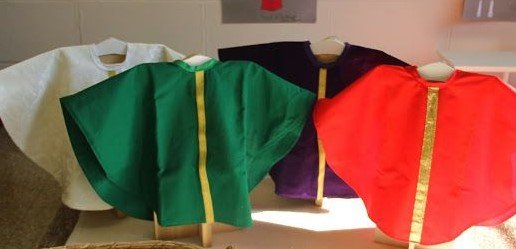
As children progress through the atrium we look at a circular liturgical calendar. This highlights the cyclical nature of the liturgical year. The calendar has a small prism for each Sunday of the year (ours also includes an extra prism to represent Christmas Day as that does not always fall on a Sunday). Essentially this work is a puzzle that the children pull apart and reconstruct. However, this provides time for the children to reflect and notice different elements of our liturgical cycle. Little facts such as Easter is longer than Lent. Ordinary Time is very long, why would that be?

There are also things to research further such as Easter is not always on the same date so how do we know when it will happen? The numbers of the Sundays in Ordinary Time don’t match the number of prisms, why would that be? When we attend daily Mass the priest sometimes wears other colours, why?
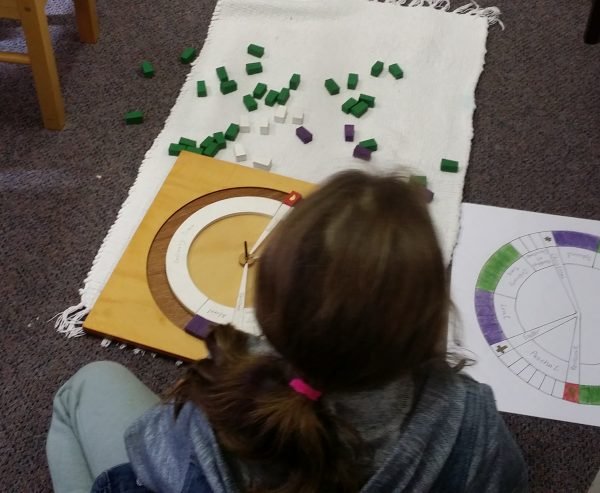
The calendar is just a starting point for discoveries about life in the church.
Many adults make observations too such as the calendar does not progress in a clockwise direction. Why would we have it going counter-clockwise? Could it be that God’s time is different to our time?
As we approach the three main feasts of our church year, Easter, Christmas and Pentecost, we celebrate with the children. These celebrations are not just parties with gifts and food. They are solemn celebrations looking at what the event is. With the children we enter into the special time that we are celebrating. At Easter, this may take the form of a re-enactment of the Last Supper and/or a Liturgy of Light celebration. Prior to that, during Lent, we bury the “Alleluia” and save the word for the special day when we proclaim the resurrection of Jesus. During Pentecost we meditate on the gift of the Holy Spirit and consider what those gifts mean for us in our lives and how we can call on those gifts to help us build God’s kingdom. During the Christmas Celebration we often have a lead up during advent culminating in recalling Jesus being incarnate and also longing for him to come again. Due to our long Summer break, this often happens a few weeks prior to Christmas Day. Our CGS friends living in the Northern Hemisphere will also celebrate the feast of Epiphany, recognising the gift given for all people.

Parents may be able to foster a sense of the liturgical year in their homes by preparing for the children a small table for prayer. Provide cloths in each of the 4 liturgical colours that the children can place on the table according to the season. Add a candle and perhaps a small statue of the Good Shepherd, the Holy Family etc. Children enjoy spending time in quiet prayer or communal prayer, including songs and hand made prayer cards. Ideas for short phrases can be taken from words used in the Mass such as “Amen”, “Alleluia”, “Thanks be to God”, “Holy, holy, holy”, “Thy kingdom come”. Other ideas can be found in the book “The Good Shepherd and the Child a Joyful Journey”.

 The resurrection is something we recall all the time in the atrium. When we light a candle, at the altar table, in the Baptism corner, during communal prayer, we recall the light of the risen Christ, the light that is stronger than death.
The resurrection is something we recall all the time in the atrium. When we light a candle, at the altar table, in the Baptism corner, during communal prayer, we recall the light of the risen Christ, the light that is stronger than death.
In a very particular way we recognise the joy of the feast of Easter, a season that we have been waiting for, for so many weeks and will celebrate for even longer than the season of preparation, Lent. This joy is celebrated with the Liturgy of Light. Just as we do at the Easter Vigil, with the children we recall the story of Jesus death and celebrate his Resurrection. We light our Pascal candle and pray using the words from the Church’s Liturgy of Light.
Dear brothers and sisters in Christ.
On this most sacred night,
in which our Lord Jesus Christ
passed over from death to life,
the Church calls upon her sons and daughters,
scattered throughout the world,
to come together to watch and pray.
If we keep the memorial of
the Lord’s paschal solemnity in this way,
listening to his Word and celebrating his mysteries,
then we shall have the sure hope
of sharing his triumph over death
and living with him in God.
We process into a darkened atrium and see the light grow stronger as we each light our own candle from the Pascal Candle.

May the light of Christ rising in glory
dispel the darkness of our hearts and minds.
Just as we are Baptised and filled with the light of the Risen Christ we too are called to share that light with all around us so that His light may illuminate the whole earth. And with the Easter Exsultet we too cry out with joy at the gift given to us, the gift of life forever in His kingdom. Alleluia! Alleluia!
Just as we are Baptised and filled with the light of the Risen Christ we too are called to share that light with all around us so that His light may illuminate the whole earth. And with the Easter Exsultet we too cry out with joy at the gift given to us, the gift of life forever in His kingdom. Alleluia! Alleluia!
Exult, let them exult,
the hosts of heaven, exult,
let Angel ministers of God exult,
let the trumpet of salvation
sound aloud our mighty King’s triumph!
Be glad, let earth be glad,
as glory floods her,
ablaze with light from her eternal King,
let all corners of the earth be glad,
filled with the mighty voices of the peoples.
knowing an end to gloom and darkness.
Rejoice, let Mother Church also rejoice,
arrayed with the lightning of his glory,
let the holy building shake with joy,
And with the Church we pray
May this flame be found still burning by the Morning Star;
the one Morning Star who never sets,
Christ your Son, who, coming back from death’s domain,
has shed his peaceful light on humanity,
and lives and reigns for ever and ever.